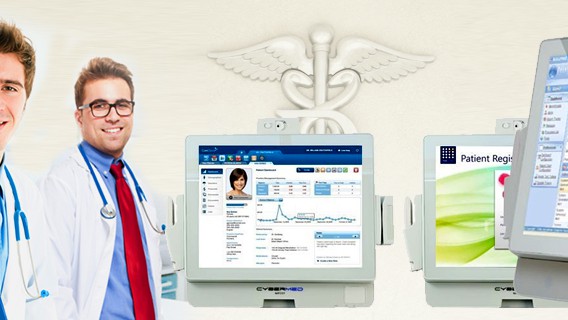It’s been a general understanding for some time that the way doctor’s take notes needs to be improved. Doing so would not only enhance patient care, it would cut down on physician burnout as well. It was believed that EHRs were to be the solution to this need in the healthcare space. Unfortunately, despite the advancements of EHRs and the medical grade computers they’re housed in, note taking has remained the bane of many care providers’ existence.
According to healthcare business tech, 25% of surgery and 32% of nursing malpractice cases were caused by a lack of proper communication, the most common culprit of said miscommunication being poor notes and documentation. Unfortunately, no matter how much we automate the note taking process, use of different terminology and unclear notes that are bound to occur due to simple human error will often cause misunderstandings.
Fortunately, studies have shown that standardized note formats such as SOAP notes have shown resoundingly positive effects in both patient care and physician burnout rates. So, what is SOAP notes exactly and how does a standardized approach to physician notes improve care?
What is SOAP Notes?
Article Guide
SOAP notes is a method of structuring doctors’ notes for patient medical records. The method involves organizing information into 4 succinct categories: Subjective, Objective, Assessment, and Plan.
-
Subjective
In this section of the notes, physicians can record their impressions of patients and support those impressions with observed facts. The subjective section can include interactions between the doctor and patient, the patient’s feelings and concerns, and also performance in the case of physical therapy.
It’s important in this section for doctors to back up all of their impressions with observed facts such as symptoms or questions/comments from the patient. The last thing a doctor needs when treating a patient is a list of assumptions from the patient’s last provider painting their impressions before they begin delivering care.
Other things to include in the subjective section are:
- Past medical history
- Symptoms
- Social and family history
- Present illnesses
-
Objective
The objective section is where providers can include some more concrete numbers and observations. Here, measurable outcomes such as test scores and percentages of any goals the patient and provider want to track can be recorded. Because this is a more numbers based section of a patient’s medical record, physicians want to avoid general statements, impressions, and excessive amounts of supportive data. Those kinds of inclusions are more fit for the “subjective” section above.
Things to include in the objective section are:
- Temperature
- Blood pressure
- Heart rate
- Other measurable factors the physician feels should be tracked based on their patient’s condition and goals.
-
Assessment
After the objective section, the assessment section allows physicians to be a little more explanatory as they lay out their professional evaluation of a patient’s condition. This section is also a sort of wrap up of the individual appointment as well, meaning physicians are encouraged to include interpretations on how the session went as well as information on a patient’s overall progress.
It’s advised that physicians avoid simply restating things mentioned earlier in the subjective and objective sections of their patient notes. The goal of this system as a whole is to remove redundancy and miscommunication after all.
Things to include in the assessment section are:
- Diagnoses
- Patient progress
- Changes in medication or treatment
-
Plan
As the name implies, here is where a physician can lay out treatment plans as well as suggestions for recuperation. This section, however, should be strictly saved for changes in a patient’s treatment plan. In an effort to remove redundancy, providers don’t want to be rewriting their entire treatment plan each time their patient visits for a checkup or appointment.
This section can include changes in activities, goals, and medication. Only rewrite treatment plans in their entirety if patients have seen no marked improvements for a long period of time and a change in treatment is necessary.
Things to include in the plan section are:
- Lab testing
- Procedures
- Referrals
- Prescriptions
- Any other kind of testing.
Why Use SOAP Notes Format?
One of the most pressing reasons standardized note formats like SOAP notes need to be adopted is because of their ability to cut down on miscommunication. If two facilities both write their notes using the same format, it won’t matter that a patient is being cared for by two providers. Both parties will be able to view their records and know exactly where the information they’re looking for will be located. This cuts down on miscommunication which can result in malpractice and also helps combat physician burnout. This is because more legible notes give physicians more time to actually care for patients, time that would otherwise be spent pouring through blocks of notes for one useful tidbit of information.
Take, for example, a pharmacist that only needs to know a change in a patient’s medication. With the SOAP notes structure, they can quickly log onto their computer or medical tablet, access the patient’s records, and scroll down to the “plan” section where that information would be highlighted. Clear, concise, and much less likely to result in miscommunication between healthcare providers.
SOAP Notes and Interoperability
While efforts are being made to fix physician burnout by addressing flawed EHR systems, there’s no telling how long those interoperability efforts are going to take. Until then, care providers can do their part by organizing their notes and standardizing the way they and their partners record and share valuable patient data. For more information on the kind of medical grade tech needed to achieve this, contact an expert from the Cybernet team today.
Improve Interoperability with the Right Medical Computers
September 25, 2018
Every organization consists of different departments working in sync together to move forward. This is doubly true with healthcare organizations such as hospitals, which measure success in lives saved and patients…
0 Comments7 Minutes
How Medical Grade Computers Improve the Standard of Care in the Medical Profession
August 3, 2015
The face of the healthcare industry has changed drastically in the past decade. Now, the use of devices like medical grade computers in patient rooms, emergency rooms, and operating rooms have allowed healthcare service…
0 Comments6 Minutes
You Can't
Learn from a Pop-up
But we can deliver knowledge to your inbox!
We dive deep in the industry looking for new trends, technology, news, and updates. We're happy to share them with you.
Knowledge, News, and Industry Updates Right in Your Inbox




